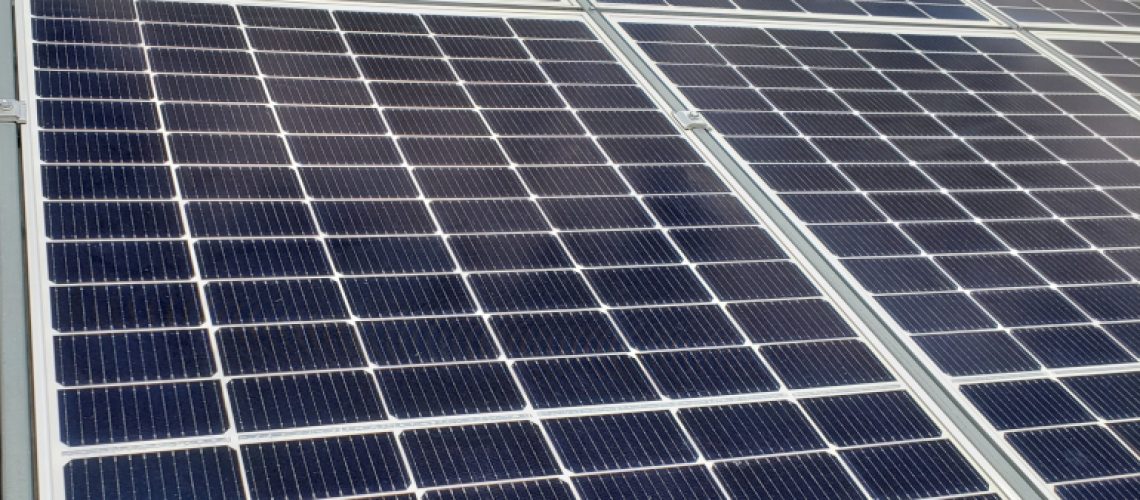Today, the U.S. Department of the Treasury released a report with new data on the success of the 2023 program year of the Inflation Reduction Act’s Low-Income Communities Bonus Credit Program. The report demonstrates how the program is lowering American families’ energy costs as part of the Biden-Harris Administration’s economic agenda.
About $3.5 billion in investments in solar installations made through the Low-Income Communities Bonus Credit Program are expected to fund the generation of close to 2 billion kWh of clean electricity each year in underserved places. That is equivalent to the total annual electricity use of 200,000 average-sized U.S. households, or about $270 million annually at typical retail rates.
“$3.5 billion in public and private investment is flowing into communities that are too often left out and left behind, thanks to Biden-Harris Administration investments in clean energy projects,” said U.S. Deputy Secretary of the Treasury Wally Adeyemo. “These investments are already lowering costs, protecting families from energy price spikes, and creating new opportunities in our clean energy future.”
Facilities that received allocations in the Low-Income Communities Bonus Credit Program’s first year include:
- Over 48,000 behind-the-meter residential energy facilities to reduce household electricity costs for single family or multifamily residences;
Nearly 100 new energy facilities to be developed on Indian lands; - Over 800 energy facilities to be installed on affordable housing developments serving thousands of low-and middle-income residents; and
- Over 300 facilities, including community solar, that provide at least 50 percent of the financial benefits of the energy they produce to low-income households.
The Low-Income Communities Bonus Credit program was established under Section 48(e) of the Internal Revenue Code to promote cost-saving clean energy investments in low-income communities, on Indian land (as defined in statute), as part of affordable housing developments, or otherwise benefitting low-income households. Low-income families across the country face energy burdens up to three-times higher than other families (i.e., they spend on average up to three times as much, as a percentage of household income, on home energy costs), and investments made through the Low-Income Communities Bonus Credit Program are playing an important role in addressing those inequities. Section 48(e) increases the Section 48 energy investment tax credit for qualifying facilities by 10 to 20 percentage points, offering a strong incentive for clean energy development and adoption.
During its first year, the program saw robust demand, with more than 54,000 applications from 48 states, the District of Columbia, Puerto Rico, American Samoa, the Commonwealth of the Northern Mariana Islands, and the U.S. Virgin Islands requesting over four times the 1.8 gigawatts of direct-current solar and wind generation capacity available for allocation in 2023.
Through a rigorous process, the IRS awarded allocations to more than 49,000 energy facilities across the country weighted toward the projects that provided the most direct savings to households. Facilities receiving these allocations represent approximately $3.5 billion in combined investment.
Facilities Receiving Program Year 2023 Allocations under IRC 48(e) Low-Income Communities Bonus Program by Application Category
|
Number of |
Nameplate Electrical Capacity of Facilities in Kilowatts of Direct Current |
|
|---|---|---|
|
(1) |
(2) |
|
| All facilities, total |
49,246 |
1,475,238 |
| Facilities located in a low-income community as defined in IRC Section 45D(e), total |
48,026 |
604,046 |
|
47,703 |
394,127 |
|
323 |
209,919 |
| Facilities located on Indian Land as defined in section 2601(2) of the Energy Policy Act of 1992 |
96 |
40,529 |
| Facilities that are part of a qualified low-income residential building project |
805 |
136,433 |
| Facilities that are part of a qualified low-income economic benefit project |
319 |
Detail may not add to total because of rounding. Source: IRS, RAAS, Statistics of Income, August 2024.
Awards were concentrated in areas experiencing high energy costs or persistent poverty, reflecting the program’s success in providing meaningful household energy savings and increasing clean energy adoption across the country in areas with the lowest levels of historical investment.
This first-year impact report comes on the heels of a Notice of Proposed Rulemaking released last week to implement the Clean Electricity Low-Income Communities Bonus Credit Amount Program under Section 48E(h). That provision, part of the Clean Electricity Investment Tax Credit under Section 48E, creates a similar program that would apply to additional clean electricity technologies beyond wind and solar, such as hydropower and geothermal.
News item from the Dept. of the Treasury



